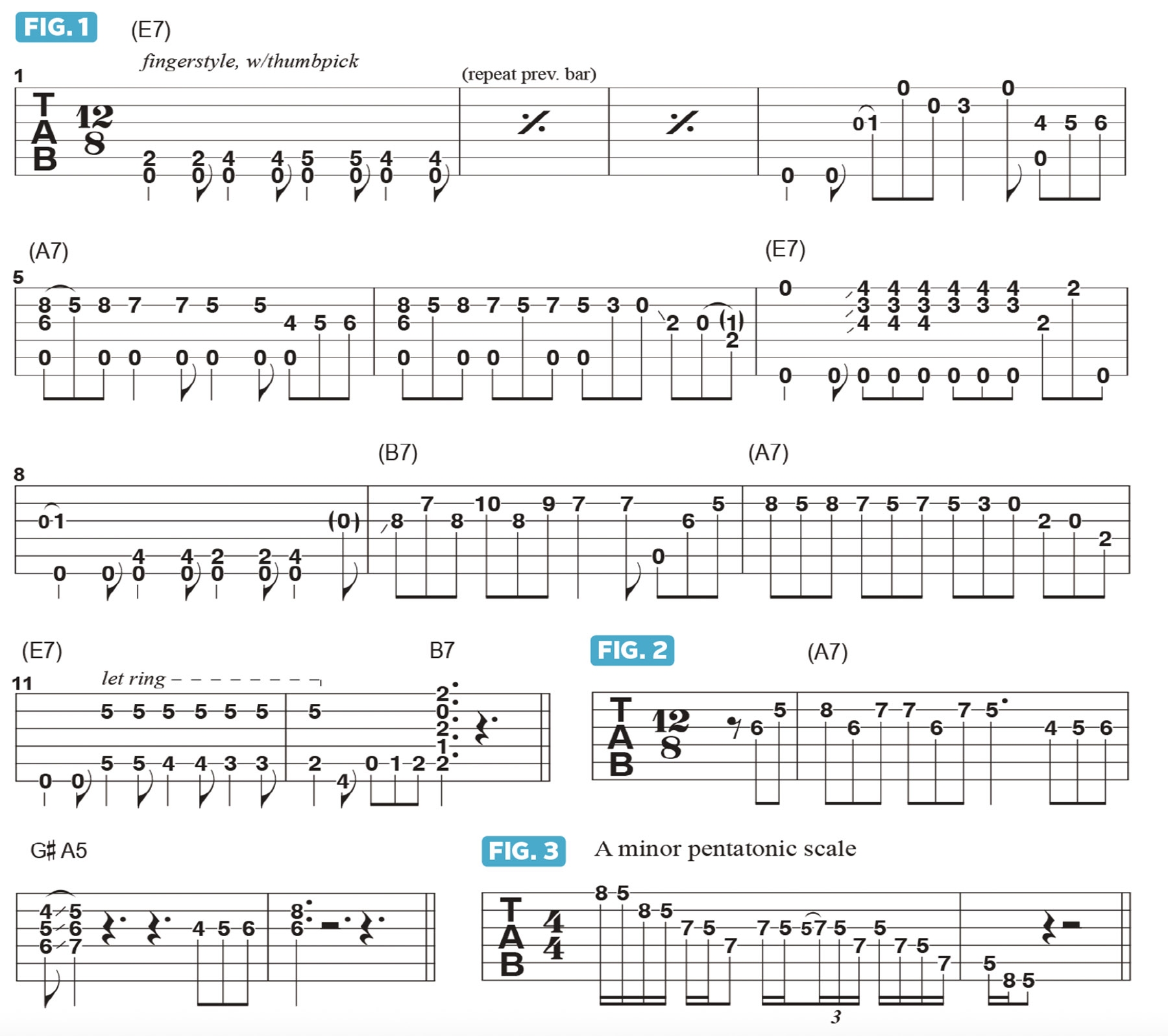
Hello everyone, and welcome to my new column for Guitar World! Over the course of these lessons, I will be demonstrating many of my approaches to blues rhythm guitar playing and soloing, covering a variety of my favorite styles of the blues along the way.
I’d like to start off with a blues lick that I love, one that I use all of the time and is “multi-functional,” in that it’s great for rhythm parts as well as soloing. Blues players often fall back into patterns: I always say that playing the blues isn’t about scales, such as the minor pentatonic scale, the blues scale, the Mixolydian mode and what have you. It’s not “scale-y” music; it’s pattern music. So you need to learn the right patterns in order to sound bluesy.
A lick I lean on a lot is a “walk-up” that connects the I (one) chord to the IV (four) chord. You’ll hear this specific lick in a lot of Chicago blues, such as the recordings of Muddy Waters with guitarists Jimmy Rogers, Dave and Louis Myers and Robert Jr. Lockwood.
Figure 1 presents a 12-bar blues shuffle in the key of E, starting with three bars of switching on each beat between two-note voicings of E5 (E and B), E6 (E and C) and E7 (E and D), implying an E7 sound overall.
In bar 4, I anticipate the change to the IV chord, A7, by playing the open A string along with the ascending notes B, C and C. Bars 5 and 6 are played over A7, and on beats 1-3 of bar 5, I play a melody on my B string along with the thumb-picked open A string. In bar 6, this melody is repeated in beats 1-3, followed by a shift down the neck to wrap up the lick and return to the I chord, E7.

Bars 7 and 8 are played over E7; notice in bar 7 that I incorporate an E7 voicing of B-D-G on the top three strings. In bar 9, we arrive at the V chord, B7, and I play the same lick as bar 5 but transposed up a whole step, from A to B, utilizing the B7 chord tones of D, A and F, along with the 6th, G.
We return to A7 in bar 10 and repeat the lick from bar 6. The 12-bar figure then wraps up in bars 11 and 12 with a standard turnaround in E, as the chromatically descending notes D, C, C and B are alternately played against a high E root.
Figure 2 focuses on this ascending lick over A7: I’m basically just walking up to the A7 chord located at the 5th fret. Regarding scales, I think of this as “first position,” working out of the standard “box” patterns of minor pentatonic and the blues scale. In Figure 3, I descend through A minor pentatonic (A, C, D, E, G) with my index finger stationed at the 5th fret.

For this melody over A7, I move down from A7 to A6 to an A triad, as shown in Figure 4. You can go so many places with this simple pattern, such as the phrase shown in Figure 5, which is based on A minor pentatonic with the added notes
C, B, B and F. Figure 6 details moving this phrase from B7 to A7 and then back to the I chord, E7.

I’ll be back next month with more essential blues phrases to incorporate into your blues rhythm parts and solos. Thanks for reading!
- This article first appeared in Guitar World. Subscribe and save.







